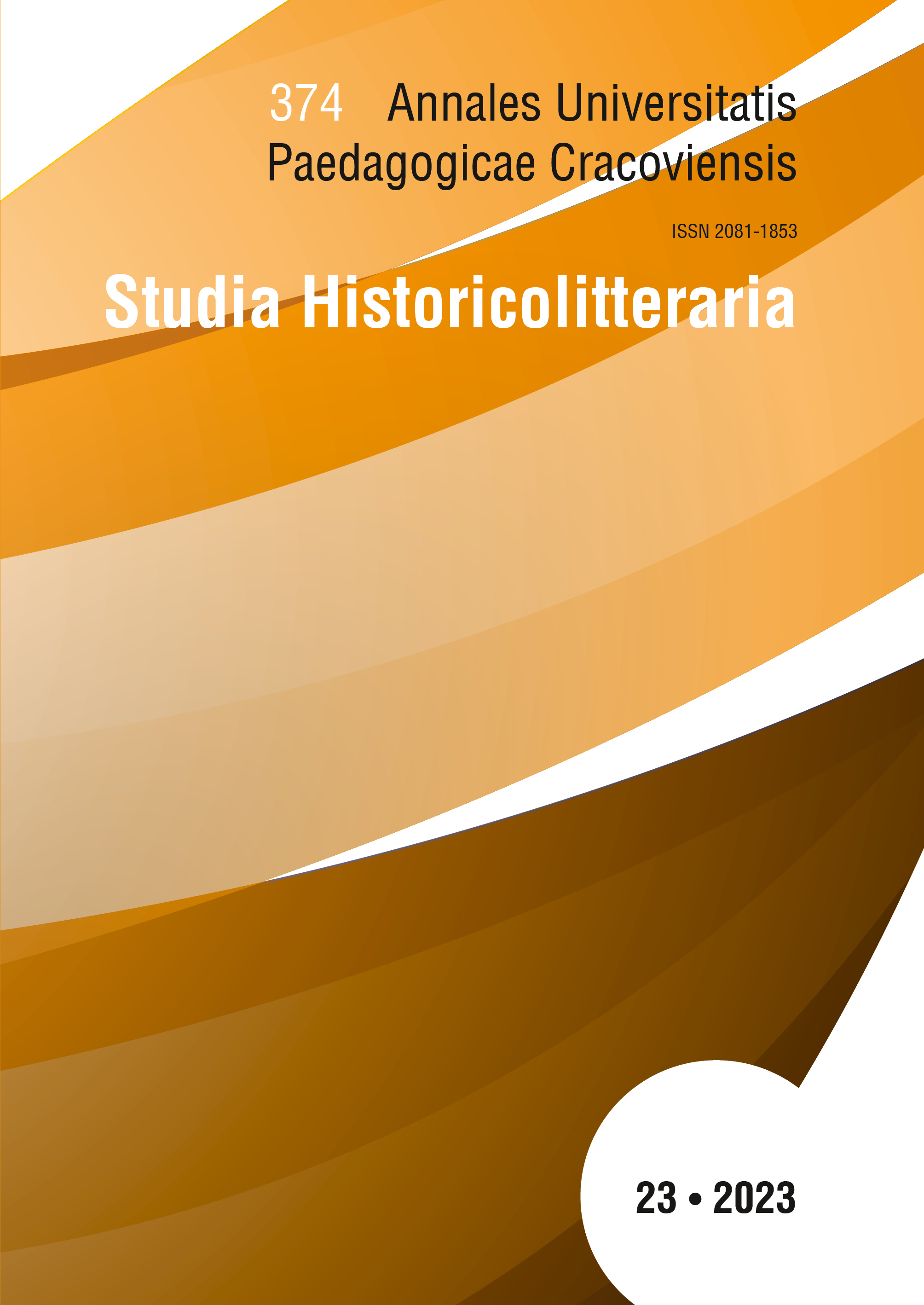Reinterpretacja poetyki węgierskiej powieści historycznej w utworach najnowszych
Main Article Content
Аннотация
The main idea of the article is the description of selected works which belong to the latest Hungarian historical novels. They are surprising for readers and at the same time constitute a polemic with the genre classics. The best‑known historical novelists ate the turn of the 19th and 20th centuries in Hungary are: Géza Gárdonyi and Maurycy Jókai. One of the reasons for their popularity is the fact that in their works they mentioned well‑known and at the same time painful events from the history of Hungary. It was the era of Turkish rule and the period of theHungarian Spring of Nations. Other events included the Trianon case, which wasn’t discussed between 1945–1989, the Second World War, and the Hungarian October. The mythic image of national struggle and the fighting Hungarian, which was shaped by Romantic writers, was preserved for a long time in the collective memory of Hungarians. It seemed to have become an indispensable element of national mythology.However, new authors appeared in contemporaryHungarian culture, who made an attempt at the demythification of events that were important for the Hungarian people. Such an attempt seems very interesting and controversial. It is a litmus test for the current state of the collective historical awareness of the nation. New literary works take a different approach to those events which are well‑known to several generations of Hungarians from classical literature. They ask questions about the borders concerning rooted axiological categories and the flexibility of historical thinking. They are also an attempt at a timeless reflection connecting different periods. In Béla Fehér’s book, which was written in the spirit of magical realism, the most popular leader of the Hungarian Spring of Nations – Lajos Kossuth (1802–1894) – quotes the words of Prime Minister Imre Nagy (1896–1958) from the days of the Hungarian October. As for the works which deal with the topic of the two World Wars, they pose questions about the moral value of struggles run on the wrong side in the interest of foreign powers.
Скачивания
Article Details

Это произведение доступно по лицензии Creative Commons «Attribution-NonCommercial-NoDerivatives» («Атрибуция — Некоммерческое использование — Без производных произведений») 4.0 Всемирная.
ПОЛИТИКА АВТОРСКИХ ПРАВ
Издатель «Annales Universitatis Paedagogicae Cracoviensis. Studia Historicolitteraria» имеет право использования и распространения всех опубликованных в издании материалов на основании договора неограниченной во времени неисключительной лицензии - предварительно заключенного на неоговоренное время с каждым автором конкретного произведения на оговоренных в том договоре условиях использования.
ПОЛИТИКА ОТКРЫТОГО ДОСТУПА
«Annales Universitatis Paedagogicae Cracoviensis. Studia Historicolitteraria» это издание с открытым доступом, а все его содержание доступно бесплатно для пользователей и организаций на основаниях неисключительной лицензии CreativeCommons (CC BY-NC-ND 4.0). Пользователи могут читать, скачивать, копировать, распространять, производить поиск или переходить по ссылкам к полным текстам статей в этом издании без предварительного согласия издателя либо автора при условии указания источника доступа и авторства данной публикации. Это согласуется с определением открытого доступа BOAI (http://www.soros.org/openaccess).
Библиографические ссылки
A magyar irodalom történetei 1920-tól napjainkig, red. M. Szegedy‑Maszák, A. Veres, Budapest 2007.
Bujnicki T., „Ci i tamci. Powieść z czasów kampanii węgierskiej” [hasło], [w:] Literatura polska.Przewodnik encyklopedyczny, t. 1, red. C. Hernas, Warszawa 1984, s. 146–147.
Burszta M., Polak, Pepik, dwa bratanki (rec. filmu Operacja Dunaj), – Filmweb, https://www.filmweb.pl/reviews/recenzja-filmu-Operacja+Dunaj-8434 [dostęp: 14.09.2023].
Búzás G., Az Egri vár története – röviden, https://egrivar.hu/c/az-egri-var-tortenete-roviden [dostęp: 15.04.2023].
Dugonics András [hasło], Wikipédia, https://hu.wikipedia.org/wiki/Dugonics_Andr%C3%A1s [dostęp: 14.09.2023].
Grendel L., A modern magyar irodalom története. A magyar líra és epika a 20. században, Kalligram 2019.
Gyáni G., Történelem és regény: a történelmi regény, „Tiszatáj” 2004, 4. sz., s. 78–92.
Hankiss E., Társadalmi csapdák, Budapest 1997.
Imre L., Nagy M., S. Varga P., A magyar irodalom története 1849-től 1905-ig, Debrecen 2006.
Keresztesi J., Revizor – a kritikai portál, https://revizoronline.com [dostęp: 10.02.2023].
Magyar irodalom, red. T. Gintli, Budapest 2011.
Nagy L.K., „Ci i tamci” T.T. Jeża na tle innych utworów na temat polskich i węgierskich powstań narodowych, [w:] Polono – Hungarica 9. Irodalom – nyelvészet – történelem – kultúra, red. D. Dziewońska‑Kiss, A. Janiec‑Nyitrai, Z. Ráduly, Budapest 2016, s. 207– 217.
Nowak P., Ryszkiewicz M., „Kontrrewolucja – powstanie – kontrrewolucja”. Wydarzenia 1956 roku na Węgrzech w języku propagandy PRL (na materiale „Trybuny Ludu”), [w:] Tematy węgierskie, red. M. Woźniakiewicz‑Dziadosz, Lublin 1997, s. 95–113.
Sallai L., Nyögvenyelős road movie kétlóerővel, https://librarius.hu/2015/03/28/kossuthkifli-road-movie-ket-loerovel/ [dostęp: 11.02.2023].
Tükör által világosan. Horváth Viktor: Török tükör, 5.01.2014, Olvass bele, https://olvassbele.com/2014/01/05/tukor-altal-vilagosan-horvath-viktor-torok-tukor/ [dostęp: 12.04.2023].
Ungvári K., A kitörés alulnézetből, 11.02.2016, index, https://index.hu/tudomany/tortenelem/2016/02/11/ungvary_krisztian_a_kitores_alulnezetbol/ [dostęp: 12.04.2023].
